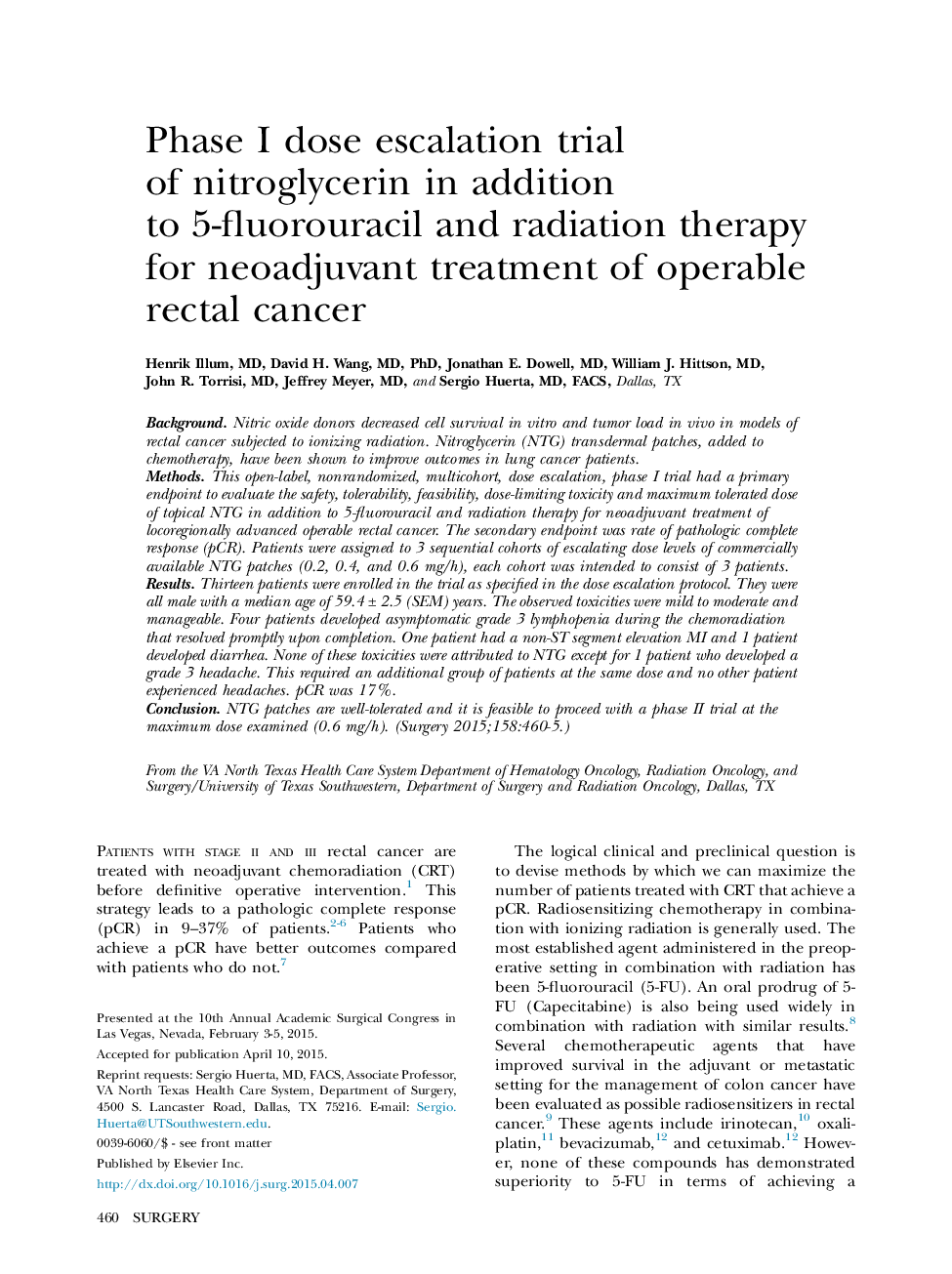| Article ID | Journal | Published Year | Pages | File Type |
|---|---|---|---|---|
| 4307016 | Surgery | 2015 | 6 Pages |
BackgroundNitric oxide donors decreased cell survival in vitro and tumor load in vivo in models of rectal cancer subjected to ionizing radiation. Nitroglycerin (NTG) transdermal patches, added to chemotherapy, have been shown to improve outcomes in lung cancer patients.MethodsThis open-label, nonrandomized, multicohort, dose escalation, phase I trial had a primary endpoint to evaluate the safety, tolerability, feasibility, dose-limiting toxicity and maximum tolerated dose of topical NTG in addition to 5-fluorouracil and radiation therapy for neoadjuvant treatment of locoregionally advanced operable rectal cancer. The secondary endpoint was rate of pathologic complete response (pCR). Patients were assigned to 3 sequential cohorts of escalating dose levels of commercially available NTG patches (0.2, 0.4, and 0.6 mg/h), each cohort was intended to consist of 3 patients.ResultsThirteen patients were enrolled in the trial as specified in the dose escalation protocol. They were all male with a median age of 59.4 ± 2.5 (SEM) years. The observed toxicities were mild to moderate and manageable. Four patients developed asymptomatic grade 3 lymphopenia during the chemoradiation that resolved promptly upon completion. One patient had a non-ST segment elevation MI and 1 patient developed diarrhea. None of these toxicities were attributed to NTG except for 1 patient who developed a grade 3 headache. This required an additional group of patients at the same dose and no other patient experienced headaches. pCR was 17%.ConclusionNTG patches are well-tolerated and it is feasible to proceed with a phase II trial at the maximum dose examined (0.6 mg/h).
